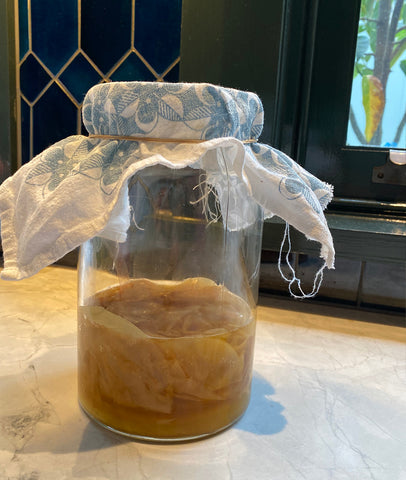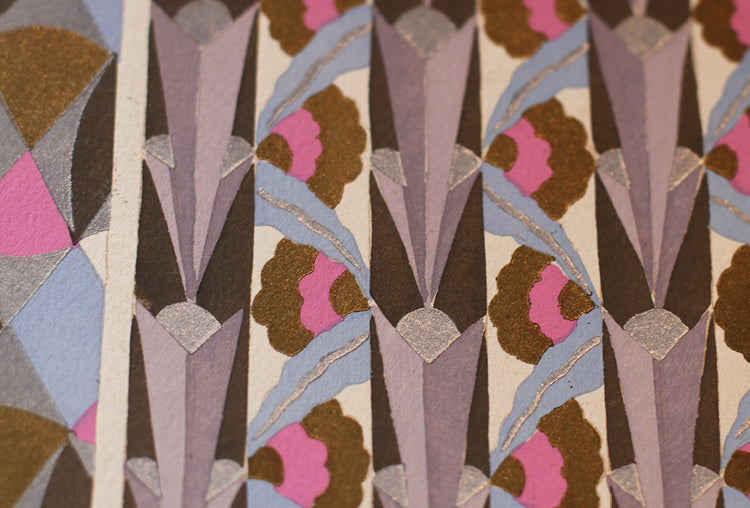Kombucha making!
Kombucha is a fermented tea rich in probiotics. The SCOBY transforms sweet tea into tangy, naturally carbonated kombucha.
Bloom's philosophy has always been an extension of my own personal passions...health food and natural ingredients have always been high on my agenda in both my business and personal life.
I started making kombucha a while back when a friend gave me a SCOBY, which is an acronym for ‘symbiotic culture of bacteria and yeast’. I've passed on the love and shared my SCOBYS with those who have shown interest and so I thought it time to (TRY) to document the process.
What you will need along with your SCOBY and starter tea which is some of the retained liquid from the last batch of kombucha or the liquid your SCOBY comes in.
Black Tea,
Sugar,
A few 1 litre (minimum) jars,
Some bottles for keeping your kombucha in the fridge,
Some muslin cloth for straining the kombucha,
Some old tea towels. I cut mine into quarters.
A plastic funnel.
* I bought my jars, bottles and funnel from IKEA.
To start, fill the 1 litre (or bigger) jar(s) with boiled water (I add some cool water so the jars don’t break). Mix in a quarter cup of sugar and stir with a wooden spoon to dissolve. Add TWO tea bags (black tea) and allow to steep until cool.
Gently transfer the SCOBY into the jar with clean hands. Add in some starter tea liquid to your tea blend and SCOBY.
The starter tea (which is some of the retained liquid from the last batch of kombucha) makes the liquid acidic, which prevents unfriendly bacteria occurring in the first few days of fermentation. If you are doing a few batches then spread out the starter tea in each jar evenly.

Cover the jar with a tea towel secured with a rubber band. Do not put a lid on the jar as the SCOBY needs to breathe. Keep the jar at room temperature and out of direct sunlight. Leave to ferment for 10 days. A new SCOBY should start forming on the surface of the kombucha within a few days. It can attach to the old SCOBY or be separate. That's how you end up increasing your SCOBY quantity and hopefully share your spare SCOBYS with someone else.

You may also see brown stringy bits floating and sediment collecting at the bottom. This is all signs of healthy fermentation. After 7 days you can start tasting the kombucha each day (don’t put a metal teaspoon in for tasting, pour it out or use a small glass or porcelain cup). When it reaches a balance of sweetness and tartness that works for you, the kombucha is ready to bottle. The kombucha will start to slightly carbonate

I personally like my kombucha quite tart and always leave it for 14 days but there is discussion that the kombucha may become alcoholic at a certain point.
Remove the SCOBY (or SCOBYS), you can either have your base tea ready to start your next batch or leave in a jar with some kombucha liquid, which will become your starter tea for your next batch.

Healthy SCOBYs need to stay in liquid to stay in good shape. So whether you’re going straight in to making a new batch or storing your SCOBY until you’re ready, you will need to retain some fermented kombucha liquid for storing your SCOBY and creating your next batch.
Optional: If you would like to flavour your kombucha (see instructions below) do this at this point in the process while your kombucha liquid is still in a jar but has no SCOBY in it.
Finally, pour the fermented kombucha into bottles using a plastic funnel and straining through some muslin cloth to remove any bits to make a cleaner Kombucha.

Leave approx. 3 cm head room at the top. I like to open the bottle after 12-24 hours and reseal as I get worried the kombucha bottle might pop.

If you like your kombucha more fizzy, you could leave the bottled kombucha at room temperature and out of direct sunlight for 1-3 days to continue the carbonating process. Otherwise refrigerate to stop the fermenting and carbonating process. kombucha can keep in the fridge for a month.
Adding flavour to your kombucha
If you would like to try to flavour your kombucha. Once you have removed your SCOBY add the flavouring of your choice. Raspberry, mango, ginger, passionfruit, peaches or anything else you would like to try. Leave the kombucha, covered, at room temperature for 2-3 days and then strain and bottle. If I am doing several batches at a time, I keep some unflavoured and flavour the rest.


And Voila!

SCOBYS covered in liquid and ready to store at room temperature (away from direct sunlight) for when I'm ready to do the next batch. This jar is larger than the 1 litre jars as I like the SCOBYS to spread out.
The process seems daunting but the more batches you make the easier it gets and you'll tweak the process to suit you. It becomes addictive and feels incredibly satisfying.

TIPS:
Never use anything metal to mix or strain your Kombucha. The metal reacts with the SCOBY. I use only glass or porcelain and a wooden spoon not cutlery.
If your SCOBY develops green or black mold, it is has become infected. In both of these cases, throw away the SCOBY.


